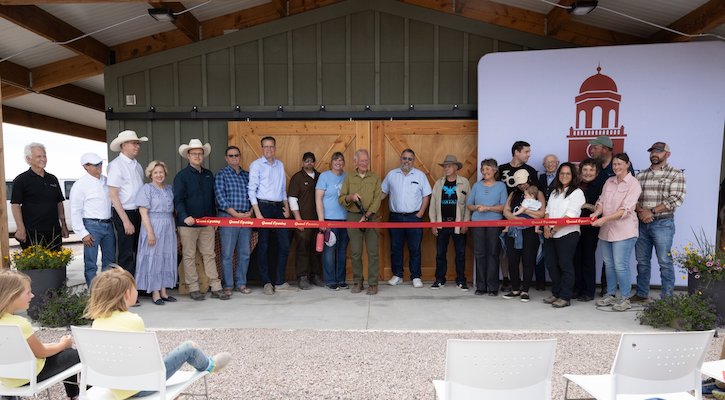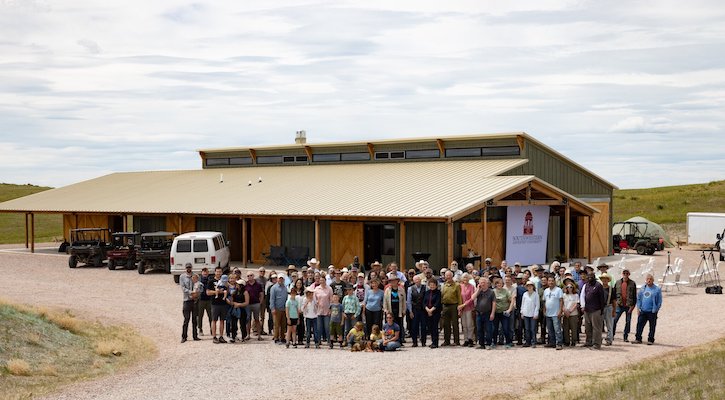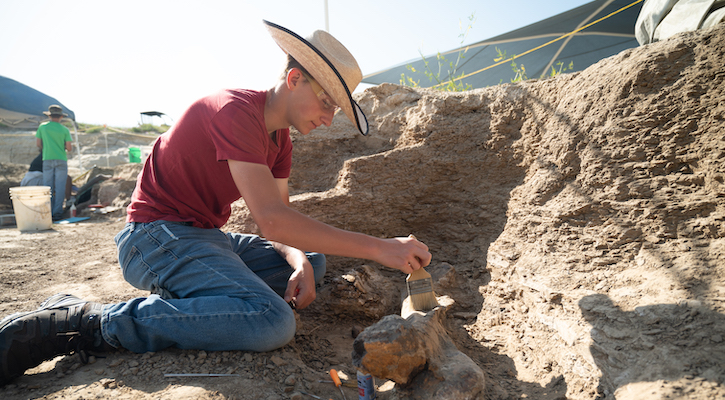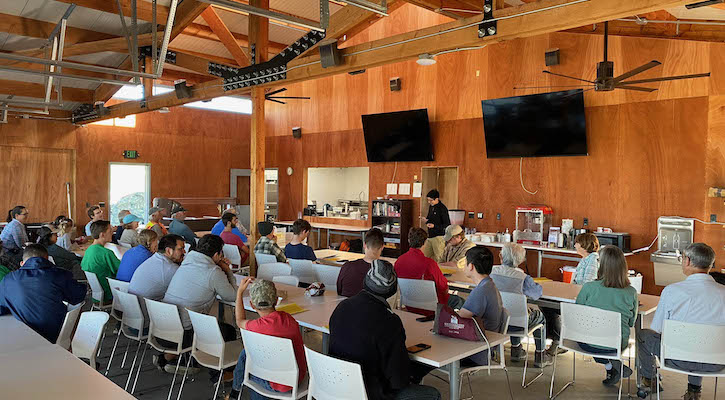
Representatives from Maranatha Volunteers International, Hanson Ranch, and Southwestern Adventist University recently gathered amongst the rolling plains of east Wyoming. They came to dedicate the newly constructed Southwestern Adventist University Dinosaur Field Station. The 8,000-square-foot structure includes classrooms, offices, bathrooms, and bone storage facilities. It’s a place for scientists and students to study fossils unearthed at the nearby Lance Formation. This sandstone belt is one of the richest dinosaur bone fields in the world and creates a special opportunity for study from a Creationist perspective.
Some of the Lance Formation’s largest bone beds are located on Hanson Ranch property. Its late owner, Glenn Hanson, was a resolute Creationist. So it didn’t sit right with him when paleontologists began studying the bones on his land and teaching evolutionary theories exclusively.
In 1996, the Hanson family contacted Southwestern University Research Professor Arthur Chadwick and invited him to visit Hanson Ranch to consider operating a Creationist research program there. One look at the bone bed, and Chadwick knew his answer. “I had never seen so many dinosaur bones over such a wide area in my life,” he recalled. “We decided we couldn’t pass this up.”
During its earliest years, Southwestern’s dinosaur research program operated out of tents and a dilapidated motorhome. In 2001, Hanson Ranch provided them with a functional research station, complete with a kitchen, classroom, and toilets. The program operated from this structure for roughly two decades. But class size expanded from six students in 1997 to 130 in 2015, and the building was simply too small to accommodate this growth. After a few years with a leaky roof and rotting floor, the structure collapsed completely during a storm.
But hope was rekindled when Maranatha committed to building a larger, permanent station at Hanson Ranch. During 2022 and 2023, six volunteer groups and Maranatha’s full-time staff worked tirelessly on the project. Crews had to haul all building materials and equipment for hours to the remote construction site. But the pain was worth the gain, because the beautiful new building now serves Southwestern University’s research program.
“This project will never be the same,” said Chadwick. “In this new building, we have accommodations, office space, and a research area where we can actually carry out experiments on these bones. So we expect that this will greatly enhance our ability to communicate this information, not only to our fellow believers, but also to the scientific community. And that’s been one of our goals. We want to reach the scientific community for Christ.”
Maranatha Volunteers International mobilizes volunteers to build churches, schools, water wells, and other urgently needed structures around the world. Since 1969, Maranatha has constructed more than 14,000 structures and more than 3,000 water wells in nearly 90 countries.




